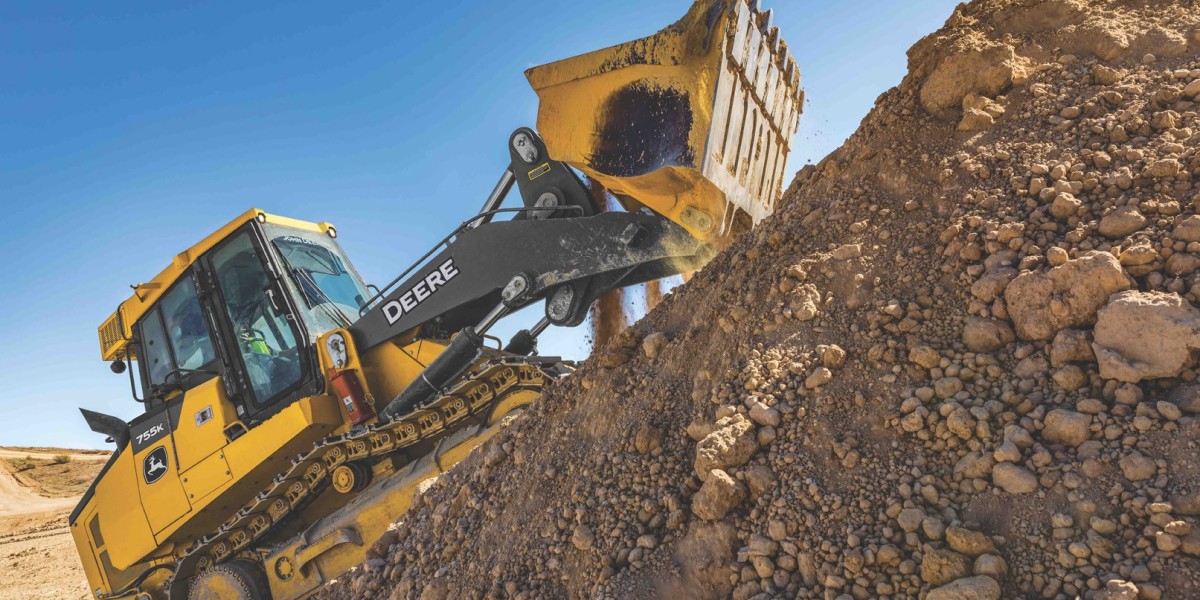Buying a motor grader is different than picking up any other bit of construction machinery. It's a long-term investment that depends directly on your job performance, uptime, and profitability. Seasoned contractors know that when they buy motor graders, every little detail counts, from machine specs to ownership history, service records to dealer support. Their secret? A combination of technical know-how, precision of inspection, as well as financial strategy. Let's take a look at how the pros do grader purchases the smart way.
Knowing What You Need Before You Buy
Before our experienced contractors even go through the listings or visit a dealer, they have set a linear definition of what they need from the grader. It's about the right machine capacity meeting the demands of the project, which can only be done when the purchase suits the project workload and environment.
They focus on:
Power requirements: Making sure that the engine output corresponds to the grading depth and soil resistance.
Blade width and control precision: Choosing the right blade sizes for finish grading or heavy cutting.
Terrain and climate: Choosing AWD systems for mud or snow.
Workload intensity: Estimating the number of hours per month that the grader will work.
By identifying these factors early on, they avoid over-purchasing or underspecifying a machine that does not align with their operational goals.
The Inspection: Seeing Beyond the Paint
A shiny coat of paint can't hide mechanical problems, and experienced buyers know it. When they buy motor graders, they perform a detailed inspection and go beyond looks.
Key areas they examine:
Engine performance: Listening for unusual sounds, checking oil condition.
Hydraulic system: Testing the speed and smoothness of lift under load.
Transmission and articulation joint: Making sure that there's not too much play or too much slowness.
Circle and moldboard: Checking for wear, tightness, and cutting edge condition.
Service logs: Looking at the maintenance intervals and any repairs in the past.
A well-documented maintenance record sometimes can overcome a newer model with a questionable service history.
Comparing Models, Brands, and Series
Experienced contractors do not often jump to the first option that they see. They examine various makes and models and compare the design strengths, fuel economy, and long-term reliability.
Good examples for smart comparison are:
Parts availability: Some brands have good worldwide support networks, such as Caterpillar or John Deere.
Fuel economy: This will have a direct impact on the cost of running the grader over its life.
Cabin ergonomics: Optimized visibility, comfort, and precision of controls increase productivity and reduce fatigue.
Resale value: Some series will hold the resale market better because of their brand reputation and build quality.
A side-by-side evaluation helps them select a grader that will balance out the initial cost with long-term savings and resale potential.
Checking the Ownership and Service History
Seasoned contractors never go for the background check. They want to know that the machine has been responsibly owned and maintained.
They ensure:
Ownership clarity: No liens, financing disputes, or hidden legal encumbrances.
Complete service logs: Documentation of consistent oil changes, component checks, and part replacements.
Reputable sellers: Established dealers or fleet owners.
OEM parts usage: Assures that replacements are original in performance.
This step acts as a filter against questionable machines that may come with hidden repair costs or risks of operation.
Balancing Cost and Long-Term Value
The smartest contractors don't pursue the lowest price; they pursue the best value. They are looking at graders using the lens of total cost of ownership (TCO), not the sticker tag.
They calculate:
Fuel and repair costs: Overestimation of savings on the purchase price can disappear with poor fuel economy or lots of breakdowns.
Depreciation vs. productivity: A higher-priced grader can maintain its value better and provide more uptime.
Warranty and service support: Longer warranty periods can help cover the possible repair costs.
When they buy motor graders, they do not treat them like an expense; they treat them like profit-generating assets.
Smart Financing and Negotiating Strategies
Veteran contractors understand that how they buy is just as important as what they buy. Their financial strategy has the minimum risk and the maximum flexibility.
Effective tactics include:
Pre-approved financing: Expedites the purchase decision and negotiation power.
Timing purchases: Buying during the off-peak seasons or at the time of inventory turnover can often get better deals.
Comparing lenders: Comparing dealer financing and third-party loan terms.
Inspection certificates: Request a recent inspection or rebuild before making a final payment.
They go into every deal with the mindset that information and patience are the keys to the deal.
Why Dealer Assistance is Important After the Sale
The transaction doesn't end with the grader being delivered. Experienced contractors are business-focused to include post-sale support, as downtime is directly linked to profit margins.
They value:
Quick parts delivery: Reduces idle time at the job sites.
Field service availability: The skilled technicians minimize the repair turnaround of items.
Warranty options: Covers unexpected mechanical failure.
Training and consultation: Dealer consultation on operation and maintenance enhances machine life.
Strong dealer partnerships can mean the difference between hassle-free project delivery and costly delays.
The Smart Buyer's Mind
The best contractors know that the purchase of a motor grader is both an art and a strategy. They do their research and comparison, and check every single aspect before signing the deal. Their choices are based on practical experience, not impulse. When you buy motor graders like they do, with clarity, foresight, and confidence, you are investing not only in a machine, but in consistent performance and long-term success.
FAQs
1. When buying a used motor grader, what's the most important thing
A: Condition and maintenance history are more important than age or appearance. A thought-through and well-maintained grader is more valuable and reliable than a newer one that is being neglected.
2. Should I prioritize brand more than machine condition?
A: Both matter, but the condition should take precedence. A well-maintained grader of any reputable brand will generally outdo a badly maintained one.
3. How do I check the actual operating hours of a grader?
A: Cross-check the hour meter with service logs, component wear, and oil analysis reports. Inconsistencies could mean meter tampering or undocumented use of the meter.
4. Is buying from a dealer any better than a private seller?
A: Yes, used vehicles can be a safer option to invest in if you can obtain inspection reports, limited warranties, and verified ownership reports from a dealer.






